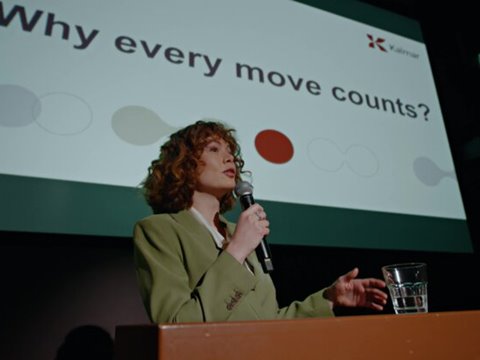| Key figure |
Definition |
Reason for the use |
| Sales, excluding Navis and heavy cranes |
Sales, total excluding Navis software business that was divested in 2021 and heavy cranes that Kalmar decided to exit in 2022 |
Measure presents sales for the continuous business of Kalmar. It improves comparability between presented periods. |
| Eco portfolio sales (MEUR and % of sales) |
The equipment and services included in eco portfolio are defined to be either aligned with the EU Taxonomy or expected to be aligned in the near future. Eco portfolio consists of two categories: climate solutions and circular solutions. |
Key performance indicator used to measure Kalmar’s sustainability ambitions. |
| Operating profit (MEUR and % of sales) |
Sales - cost of goods sold - selling and marketing expenses - research and development expenses - administration expenses - restructuring costs + other operating income - other operating expenses + share of associated companies’ net income |
Operating profit is used to measure business profitability. It describes the profitability of the business before taking into account financial items and taxes. |
| Operating profit, excluding Navis and heavy cranes (MEUR and % of sales) |
Operating profit excluding Navis and heavy cranes |
Measure improves comparability between presented periods and presents the operating profit (MEUR and % of sales) excluding businesses that are exited via divestment or ramp-down. |
| Comparable operating profit (MEUR and % of sales) |
Operating profit excluding items affecting comparability |
Comparable operating profit is used to monitor and forecast profit development and set related targets. It is calculated by excluding items affecting comparability from operating profit and non-core business, which makes it easier to compare the profitability of the business at different time periods. |
| Comparable operating profit, excluding Navis and heavy cranes (MEUR) |
Comparable operating profit excluding Navis and heavy cranes |
Measure presents the comparable operating profit for continuing activities and excludes businesses that are exited via divestment or ramp-down. It improves comparability between presented periods. |
| Restructuring costs and other items affecting comparability (MEUR) |
Items affecting comparability include restructuring costs and other items affecting comparability such as significant capital gains and losses, gains and losses related to acquisitions and disposals, costs related to the planned partial demerger from Cargotec and related listing costs, impairments and reversals of impairments of assets, and costs that are related to aforementioned items. |
Factor used to calculate Comparable operating profit. |
| Net working capital (MEUR) |
Inventories + operative derivative assets + accounts receivable + contract assets + other operative non-interest-bearing assets - provisions - operative derivative liabilities - accounts payable - pension obligations - contract liabilities - other operative non-interest-bearing liabilities |
Net working capital is used to follow the amount of capital needed for the business to operate. It does not include financing items, taxes nor non-current assets. |
| Return on capital employed (ROCE) |
100 x (Profit before taxes + finance expenses, last 12 months) / (Total invested equity + interest-bearing debt, 12 months average) |
Represents relative profitability or the rate of return that has been received on capital employed requiring interest or other return. |
| Interest-bearing debt |
Non-current interest-bearing liabilities + current portion of interest-bearing liabilities + current other interest-bearing liabilities + Cash pool liabilities, Cargotec Group) |
Used as a factor to calculate Return on capital employed (ROCE). |
| Earnings per share |
Profit for the period / number of outstanding Kalmar shares at the date of the Demerger Prospectus |
|
| Interest-bearing net debt |
Interest-bearing liabilities (non-current interest-bearing liabilities + current portion of interest-bearing liabilities + current other interest-bearing liabilities) –interest-bearing receivables (non-current and current loans receivable and other interest-bearing assets) – cash and cash equivalents |
Interest-bearing net debt represents Kalmar's indebtedness. Used to monitor capital structure and as a factor to calculate Gearing. |
| Gearing (%) |
100 x Interest-bearing net debt / Total equity |
Represents the company's indebtedness by measuring the amount of interest-bearing debt in proportion to equity capital. Some of Kalmar's loan agreements include a covenant restricting the corporate capital structure, measured by gearing. |















